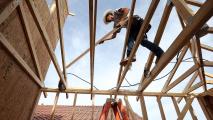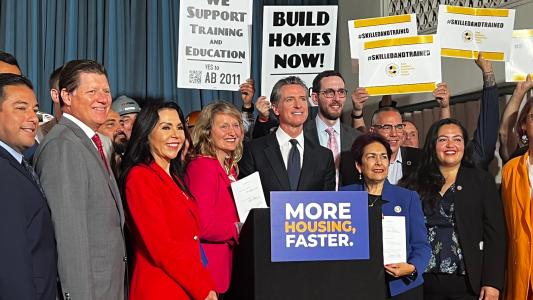The phenomenon of urban sprawl contributes to a number of modern problems. The dedication of vast spaces for roads and parking can increase the risk of flooding. The reliance on driving that sprawl necessitates is bad for health, physical safety, and increases carbon emissions. Sprawl is often cited as part of the cause of the decline in social capital in the United States and is thought to increase residential segregation by race and class.
One possible solution to these problems is a change in our approaches to urban planning.
The idea of urban villages — conceived of in ‘80s Britain but having roots in the reaction to postwar urban planning and in the Garden City movement of the late 19th century — offers an alternative vision to sprawl and car-dependent cities. Essentially, it proposes neighborhoods with a mix of housing and commercial space, where walkability is maximized.
A village within a city: As explained by Professor Robert Stokes of DePaul University, “The urban village concept in planning tends to be more attractive to more sprawling cities that were planned and built out after the widespread use of the automobile. The concept seeks to create more walkable, bike and pedestrian friendly spaces within cities, while also leveraging public transit to effectuate a better mix of housing and employment to cut down on out-of-neighborhood trips.”
According to Todd Litman, director of the Victoria Transport Policy Institute, the typical urban village is a highly walkable area of about 300 to 500 acres. The neighborhood’s Walkscore, a measure of how many basic errands can be done without a car, should be high, ideally over 70 — meaning that most or all necessary errands can be done without an automobile. While they can have high-density housing, this is not required, as only 5,000 to 10,000 people need to live in the area to make necessary businesses, like grocery stores, restaurants, and shops, profitable from local customers.
One way this makes them differ from the typical American neighborhood is a lack of parking space, needed to create the density they require. This trade-off is caused by the need to fill the space efficiently, and parking wastes lots of space that could be devoted to businesses and housing that people need to actually live in a place.
This isn’t to say “no parking,” just less than the space typically dedicated to it in areas with commercial zoning — which can be more than half of the land area. (The understanding that parking takes up insane amounts of space in the modern metropolis is nothing new; the designers of the popular game “Sim City” purposefully left it out for fear that it would take up half of the in-game map.)
Mixing up development: A number of studies suggest that mixed-development areas, which aren’t uniformly zoned for residential, industrial, or commercial use, lead to more productive businesses and more tax revenues. While sprawl and class segregation can impede upward mobility, mixed-use neighborhoods are associated with a higher likelihood of low-income children growing up and moving into a higher economic bracket.
Studies on walkability suggest that people living in more walkable neighborhoods are healthier, breathe cleaner air, enjoy less crime, and benefit from cost savings. According to Litman, moving from a car-dependent suburb to an urban village will cut a family’s automotive expenses in half. The customer base created by the walkability and easy access to services means that businesses in these neighborhoods tend to be robust.
They can be sections of existing cities, as in Arlington, Virginia, or suburbs near a larger urban area, like Bensenville, Illinois, or even well-designed stand-alone towns in rural areas.
Other examples are not hard to find. Professor Stokes points to Santana Row in San Jose: “One good example of the Urban Village concept is the city of San Jose, CA, a fast growing city that has seen incredible increases in housing prices, well-paying tech jobs, and recent investments in rail service. Places like San Jose would seem to have the resources and market demand for Urban Village living.”
Before you call your local planning board and ask them to use their powers to start turning your neighborhood into an urban village, remember that this concept is no magic bullet and that there are criticisms to consider.
A common concern is whether it is feasible to have many self-contained neighborhoods where everyone can be expected to carry out most of their daily activities — including work. Another is the broadness of the concept: knowing when you’ve actually built an urban village might be difficult. Professor Stokes also spoke to the possible difficulties of making sure that the housing in these areas remains affordable.
Yet many problems facing the world today are exacerbated by poor urban planning. Urban villages provide an alternative to the sprawl seen in many cities that can lead to lower pollution, better health, and strong economic outcomes. It might be difficult to find parking if you want to drive to see one, but a little walking might be a price worth paying.






